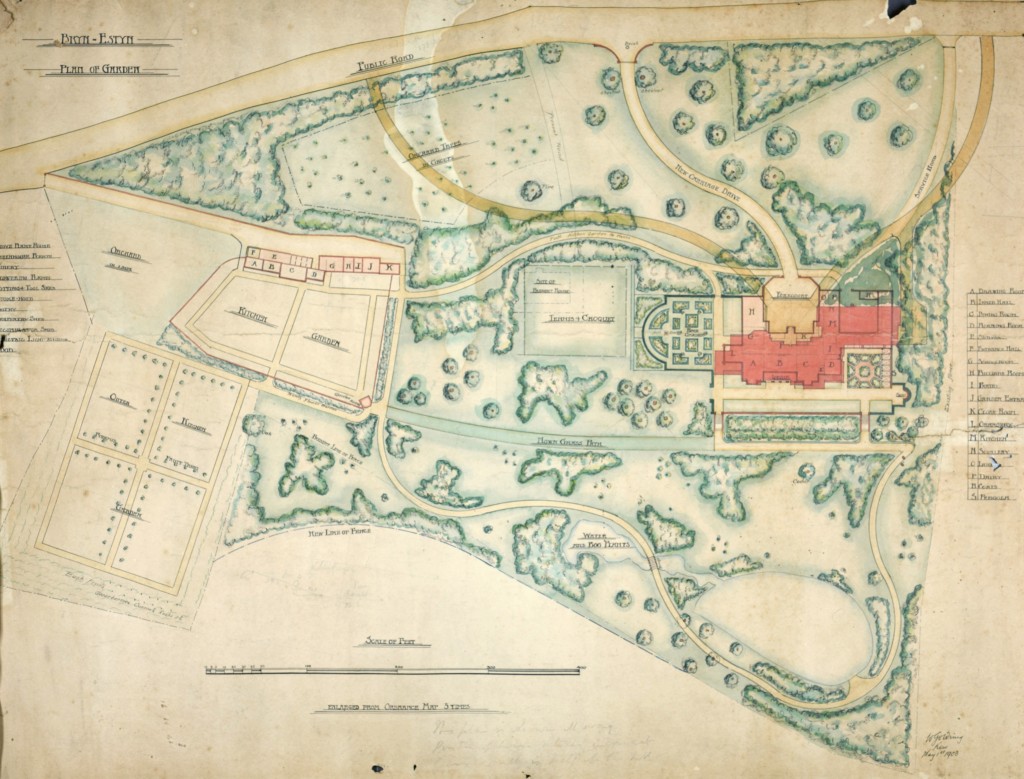Travel down the rough and neglected Bryn Estyn Lane and you will find a once grand landscape hidden in plain sight. To an untrained eye, the garden has lost its lustre. The formal gardens to the west of the property have long since suffered a heartless destruction from years of institutional use. Yet, even in this sorry state one can see the master stroke of of a brilliant landscape architect who shaped the former estate grounds as it is today.
William Goldring, of Kew Gardens, was an eminent landscape architect in the early twentieth century. He designed approximately seven hundred gardens, twelve of which are now grade II listed. He was a well respected horticulturalist who used his plant knowledge to create a parkland setting that extended well beyond the carefully manicured formal gardens that lay immediately adjacent to the house.
As with many landscape architects of his day, his design at the former Bryn Estyn Estate can be viewed as following the cues of the popularized English Landscape Style. He married the formula of planning a formal garden, which was then softened as it led into the wider parkland. As well as a temple, the formal garden area also featured an exedra seat (which was made of stone in a semi-circular layout). Avenues of trees were planted, not unlike those found in the gardens of nearby Erddig.
Goldrings extensive horticultural knowledge that allowed him to work with existing elements as well as adding the many grand trees that grace the woodland area, as well as carefully managing pathways and other edited areas that allowed for visitors to explore the land below the escarpment to the naturalistic pond below. While overgrown, this element of the park retains much of its original beauty. With careful pruning and renovation the garden could become a celebrated open park for generations to come.
The walled kitchen garden adjacent to the old Bryn Estyn house pre-dated the carefully sculptured landscape. It was integrated into the overall park scheme almost as it is seen today. The walled garden has been lovingly brought back to life by the Erlas Victorian Walled Garden project. The Walled Garden Projects website is well worth a visit, so please follow this link to take a look at the amazing work thats going on there. They have also carried out a conservation survey of the gardens, and this can be read here.
William Goldring was known for creating sumptuous landscapes based on his extensive horticultural knowledge of which plants would do well in a particular environment. He created naturalistic elements that sculpted the park as it is today. Even through the years of neglect it is possible to regain the beauty of the park as it what once stood. Remove the overgrowth, demolish the former jail cells, re-instate some of the lost pathways and the people in Wrexham will be gifted with a landscape that retains the heritage of the former Soames estate while contributing to the health and well being of the community.
If you would like to learn more about William Goldring, the Welsh Historic Gardens Trust have a special report on his life, in the Summer 2009 edition of their publication "The Bulletin". It's well worth reading about this prolific garden designer, and his work. You can read the report here.

The garden design by William Goldring of Kew from 1908 clearly shows formal and more natural landscaped areas.
